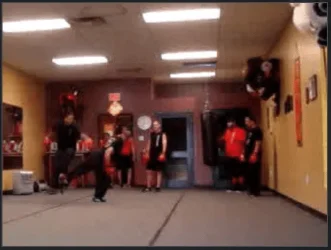That is his attack and I knew you would say that the pad holder is moving the pad to close the distance, which is why I didn't bring it up originally. I was hoping you would see it and not make such a statement. This shows the kick moving past the pad. You can see his foot on the pad holders chest.Yes, there is distance deception. Your video shows him hopping in with his kicks and the pad holder moving the target/pad in to close the distance.
Safe Zones are not static.
Safe Zones are based on our assumption of what we think our opponent can do, won't do, will do, can't do. To thi with the sanda guy and they will still be well in reach with his striking.
Keep in mind. Power generation for striking is Move foward + Attack. The main goal of move foward isn't to close the distance, it's to assist with power generation. In other words the move forward is the attack.



